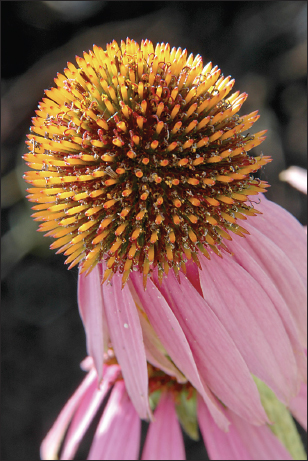Capturing Dynamic Close-Ups
For great close-up shots, try these techniques:
- Check your lens manual to find out its minimum close-focusing distance. How “up close and personal” you can get to your subject depends on your lens, not the camera body.
- Take control over depth of field by setting the camera mode to A (aperture-priority autoexposure) mode. Whether you want a shallow, medium, or extreme depth of field depends on the point of your photo. In classic nature photography, for example, the artistic tradition is a very shallow depth of field, as shown in Figure 9-12, and requires an open aperture (low f-stop value). If you want the viewer to be able to clearly see all details throughout the frame — for example, you're shooting a product shot for a sales catalog — you need to go the other direction, stopping-down the aperture as far as possible.

Figure 9-12: Shallow depth of field is a classic technique for close-up floral images.
- Remember that zooming in and getting close to your subject both decrease depth of field. So back to that product shot: If you need depth of field beyond what you can achieve with the aperture setting, you may need to back away, zoom out, or both. (You can always crop your image to show just the parts of the subject that you want to feature.)
- When shooting flowers and other nature scenes outdoors, pay attention to shutter speed, too. Even a slight breeze ...
Get Nikon D600 For Dummies now with the O’Reilly learning platform.
O’Reilly members experience books, live events, courses curated by job role, and more from O’Reilly and nearly 200 top publishers.

